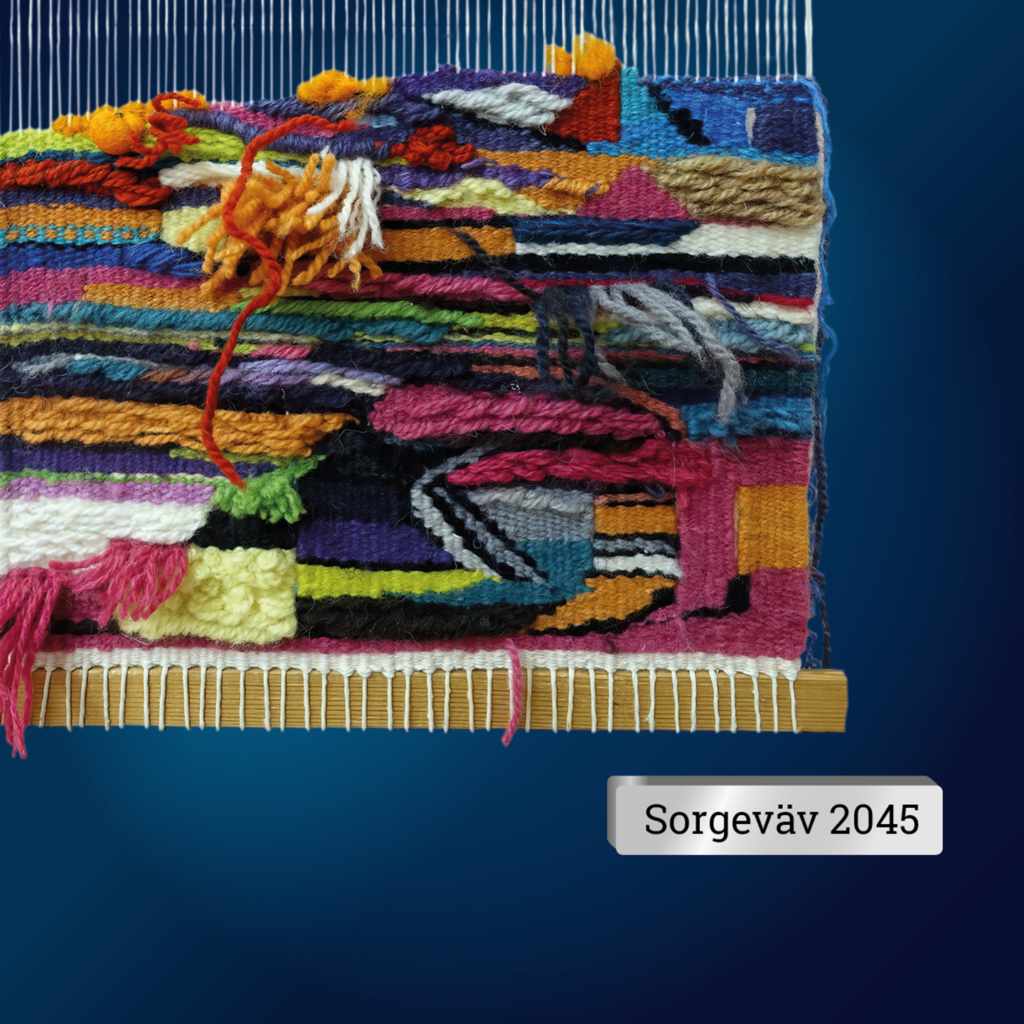This museum is not only intended to celebrate the achievement of net zero emissions. It was also established to remember the more painful parts of the fossil era so that we don’t repeat our mistakes.
Choosing not to do something is also a choice. Politicians, business leaders and citizens knew already in the 20th century that the fossil era had to come to an end – and that every year lost would create suffering in the future.
The monument “The weave of sorrow” was built outside the museum in 2045, the same year that Sweden reached its climate targets. The weave of sorrow was the starting point for the collections of this museum.
We don’t yet know the exact amount of damage caused by climate change as we’re still experiencing its effects. But we do know that many people died and that even more people suffered. We know that the ones the least responsible for climate change were hit the earliest and the hardest. The weave of sorrow was created for all of them. Over the years, many groups have brought a piece of cloth symbolising something they have lost and added it to the sculpture.
The exiled inhabitants of the Solomon Islands added a canoe against a light blue background, which symbolises their lost connection to the sea and their culture.
The Norwegian association of oil veterans added a piece of cloth from their former work uniforms to symbolise the loss of part of their identity when the oil industry collapsed. When doing so, they also apologised for their role in the fossil era.
Sami organisations added a reindeer hide to symbolise the many reindeer and reindeer owners who suffered as climate change and industries made it more difficult for the reindeer to find food.
Many more pieces of cloth will be added over time, and each ceremony is an important opportunity for the participants to remember, grieve and move on.
The role of a museum is not to paint history in a positive light, but to talk about it and learn from it. We now know that Sweden’s climate target, net zero emissions by 2045, was not sufficiently ambitious. We know that many people suffered unnecessarily. But we also know that the world did not come to an end, as many people believed at the beginning of the climate transition.
This text is part of the future scenario and study material Beyond the Fossil Era.
